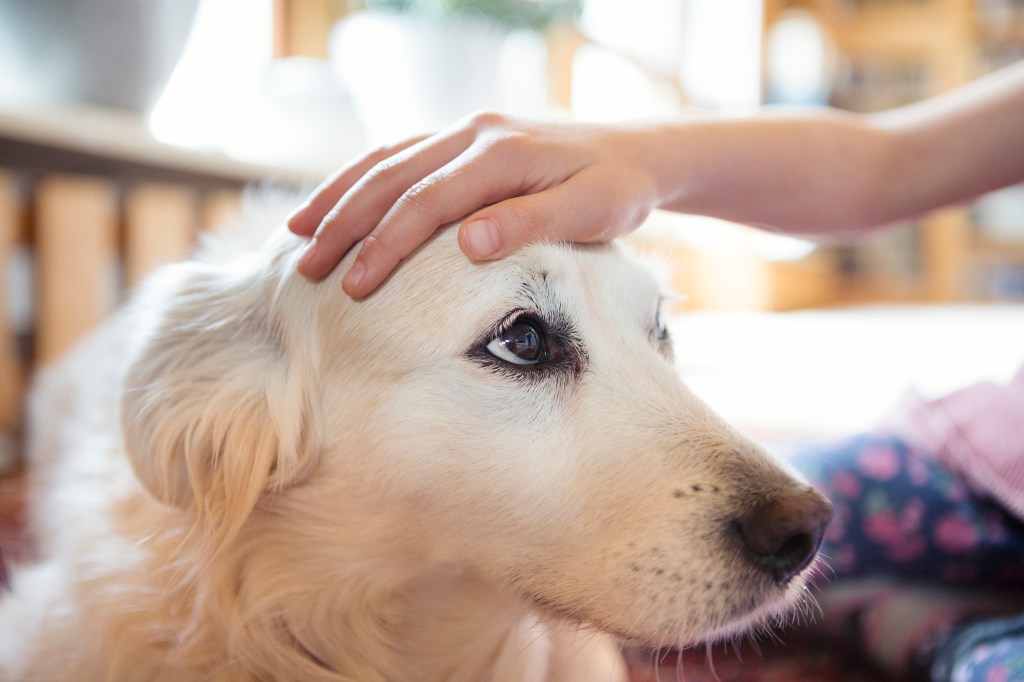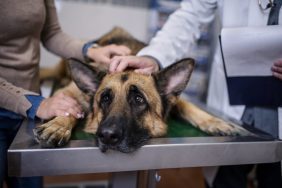Retinal dysplasia in dogs is an eye disorder that is characterized by the abnormal development of the retina during fetal growth. The retina is a thin layer of tissue at the back of the eye, responsible for receiving light and converting it into neural signals that the brain interprets as vision. When a dog has retinal dysplasia, the retinal cells do not form correctly. This leads to vision problems ranging from minor visual impairment to complete blindness, depending on the severity of the condition.
There are three forms of retinal dysplasia:
- Multi-focal retinal dysplasia: This form involves small folds or creases in the retinal tissue and generally has the least impact on a dog’s vision.
- Geographic retinal dysplasia: In this form, larger areas of the retina are malformed. This can have a more significant effect on vision but does not usually lead to total blindness.
- Complete retinal dysplasia: The most severe form involves total retinal detachment, leading to blindness in the affected eye(s).
Here’s what you should know about the symptoms, causes, and treatments for the condition.
Symptoms of retinal dysplasia in dogs
The symptoms of retinal dysplasia in dogs can range from subtle to overt, depending on the severity of the condition. In mild cases, dogs might not show any noticeable signs of visual impairment. However, as the condition progresses — or in more severe forms — symptoms may include:
- Clumsiness or disorientation
- Difficulty in navigating spaces
- Change in eye appearance
- Unusual eye movements
- Reluctance to go out at night
- Changes in pupil response
Causes of retinal dysplasia in dogs
Retinal dysplasia is primarily a genetic condition, meaning it is inherited from the dog’s parents. Several breeds are more susceptible to retinal dysplasia, including but not limited to Labrador Retrievers, Golden Retrievers, Bedlington Terriers, Cavalier King Charles Spaniels, American Cocker Spaniels, and English Springer Spaniels. It’s worth noting that not all puppies from affected breeds will develop retinal dysplasia; genetic predisposition simply means they are at higher risk.
In addition to genetic factors, retinal dysplasia can be caused by:
- Viral infections: Infections during pregnancy, such as those caused by the canine herpes virus, can lead to retinal dysplasia in offspring.
- Toxic exposure: Exposure to certain toxins during pregnancy can increase the risk of retinal dysplasia in puppies.
- Nutritional deficiencies: Poor nutrition during the critical stages of fetal development may also contribute to the development of retinal dysplasia.
To diagnose retinal dysplasia, your vet will begin by performing a comprehensive ophthalmic exam. During this exam, they will use an ophthalmoscope to evaluate the structure and function of your dog’s eyes. They may also utilize diagnostic imaging techniques, such as electroretinography (ERG), to evaluate your dog’s retinas. Additionally, your vet may recommend genetic testing to determine if your dog has a predisposition to developing retinal dysplasia. By using a combination of these techniques, your vet can make an accurate diagnosis of retinal dysplasia in your dog and develop an appropriate treatment plan to manage the condition.
Treatments for retinal dysplasia in dogs

As a congenital condition, retinal dysplasia is irreversible, and there is currently no cure. Treatment strategies focus on managing the symptoms and ensuring affected dogs can lead comfortable lives despite their visual impairments. In mild cases, dogs typically adapt remarkably well to their impaired vision, relying on their other senses to navigate their environment. However, for dogs with moderate to severe visual impairment, the following approaches can help:
- Environmental adjustments: Adjusting your home environment can greatly assist your dog in navigating their world safely. This involves minimizing potential hazards, like sharp corners or objects they might bump into, and maintaining a consistent layout of furniture so your dog can memorize the space. You might also want to use tactile and auditory cues to help guide your dog around the house.
- Regular vet check-ups: Regular veterinary check-ups are essential to monitor the condition and manage any complications, such as secondary eye diseases that might arise due to retinal dysplasia.
- Nutritional support: There is some evidence to suggest that dogs with retinal dysplasia may benefit from an antioxidant-rich diet that includes nutrients like vitamin E, vitamin C, lutein, and omega-3 fatty acids, all of which are known to support retinal health. However, always consult your veterinarian before making significant changes to your dog’s diet.
- Assistive devices and training: For dogs that may suffer from blindness, assistive devices like halos can be incredibly helpful. These devices fit around your dog’s head and body, protecting them from bumping into walls and objects. Additionally, training your dog to respond to verbal commands or clicker training can help them navigate their environment more effectively.
With the right approach and early detection, many dogs with this condition can still enjoy a fulfilling life. If your dog is diagnosed with retinal dysplasia, work closely with your veterinarian to devise an appropriate care plan.









